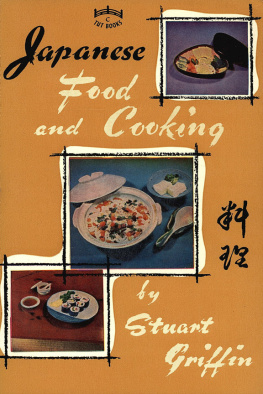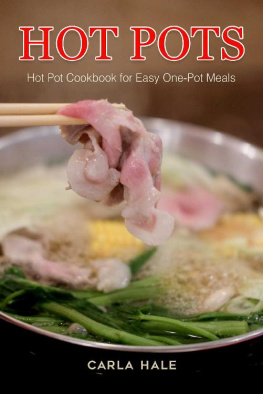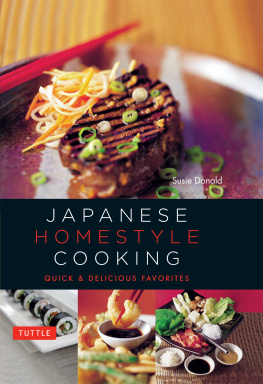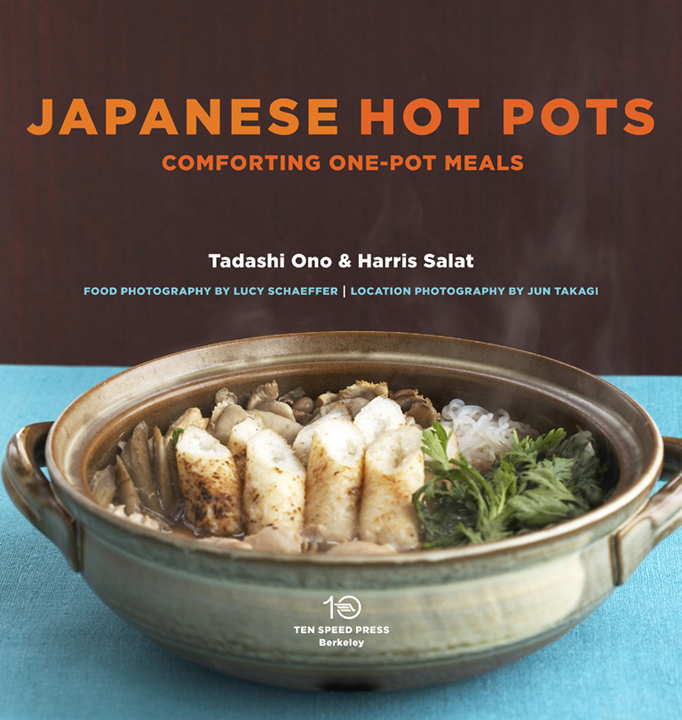Copyright 2009 by Tadashi Ono and Harris Salat
Food photographs copyright 2009 by Lucy Schaeffer
Location photographs copyright 2009 by Jun Takagi
All rights reserved.
Published in the United States by Ten Speed Press, an imprint of the Crown Publishing Group, a division of Random House, Inc., New York.
www.crownpublishing.com
www.tenspeed.com
Ten Speed Press and the Ten Speed Press colophon are registered trademarks of Random House, Inc.
Library of Congress Cataloging-in-Publication Data
Ono, Tadashi, 1962
Japanese hot pots : comforting one-pot meals / Tadashi Ono and Harris Salat.
p. cm.
Includes index.
Summary: A collection of 50 recipes for authentic Japanese hot pots, including a primer on hot pot culture, ingredients, condiments, and toolsProvided by publisher.
1. One-dish mealsJapan. 2. Cookery, Japanese. I. Salat, Harris. II. Title.
TX840.O53O56 2009
641.820952dc22
2009008445
eISBN: 978-1-60774-131-2
Cover design by Toni Tajima
Food styling by Martha Bernabe
Photography assistance by Shane Walsh
v3.1
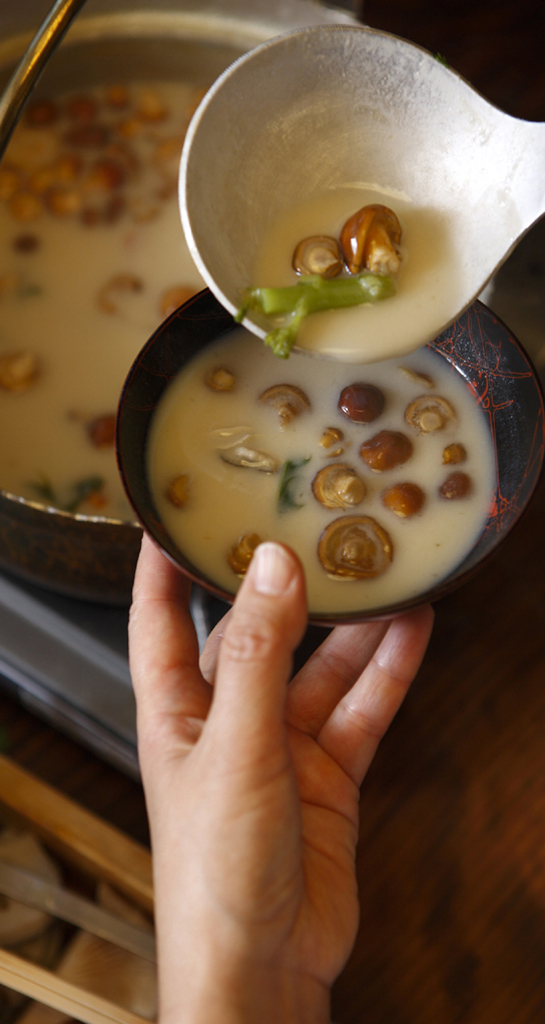
Contents
Acknowledgments
Id like to thank my wonderful familymy wife, Manami, and daughters, Sueh and Kikufor all the fun weve had sharing hot pots. Theyre my inspiration and the reason I cook these dishes. Id also like to thank Sean MacPherson, Eric Goode, Mikio Shinagawa, Richard Born, and Ira Driker, the owners of Matsuri restaurant, for their support; Maurice Rodrigues of the Maritime Hotel; and Ryuji Irie, Taka Terashita, and the rest of the crew in the Matsuri kitchen.
Tadashi
Id like to thank my lovely wife, the artist Momoyo Torimitsu, for her wisdom, encouragement, and stellar palate; my mother and grandmother for kindling my passion for cooking; my father and Uncle Adam for bequeathing a zest for storytelling and curiosity about the world; my old buddies Clark Morgan and David Seeley for mentoring my wordsmithing; and my friends and heroes Stephen and Corky Pollan for inspiring me to write about food.
Harris
Both of us would like to thank the amazing people across the globe who have generously helped us with this book. In no particular order, wed like to thank our editor, Brie Mazurek, and the terrific team at Ten Speed Press; our fantastic volunteer recipe testers around the world; the good folks at Le Crueset, Lodge, and Staub for supplying us with their outstanding cookware; our literary agent, Jeremy Katz; Jim Oseland, Dana Bowen, Todd Coleman, Hunter Lewis, and the gang at Saveur magazine for their assistance and for lending us their props; our friends in the Japanese government for their support and encouragement; Chef Hisao Nakahigashi, his wife, Kimiko, and his son, Atsushi, for their gracious assistance in Kyoto; Mr. and Mrs. Takao Kawasaki of Fukuoka; Chef Chikara Sono of Kyo Ya in New York; Lloyd Nakano of the Hotel Seiyo Ginza in Tokyo; Chef Motohide Midorikawa; Mrs. Sachio Imai of Kyoto; Atsuko Uchida for her research and assistance; our location photographer, Jun Takagi; our food photographer, Lucy Schaeffer, and food stylist, Martha Bernabe; Yuki Sakamoto for all her help and research; journalist Keiko Tsuyama for her keen input; Michele Bonds for testing, tasting, and offering invaluable feedback; Jamie Graves and Kate Rankin for their research; author Andrea Nguyen for her sage advice; journalist Asao Teshirogi for her assistance; Kay Blumenthal for her spot-on editorial insights; Eric Shih and Stephana Patton for reading and reviewing; and the restaurants Miyako and Yoshi Ume in Tokyo, Kindaite in Ishikari, Hinote in Otaru, and Yoshioka in Fukuoka.
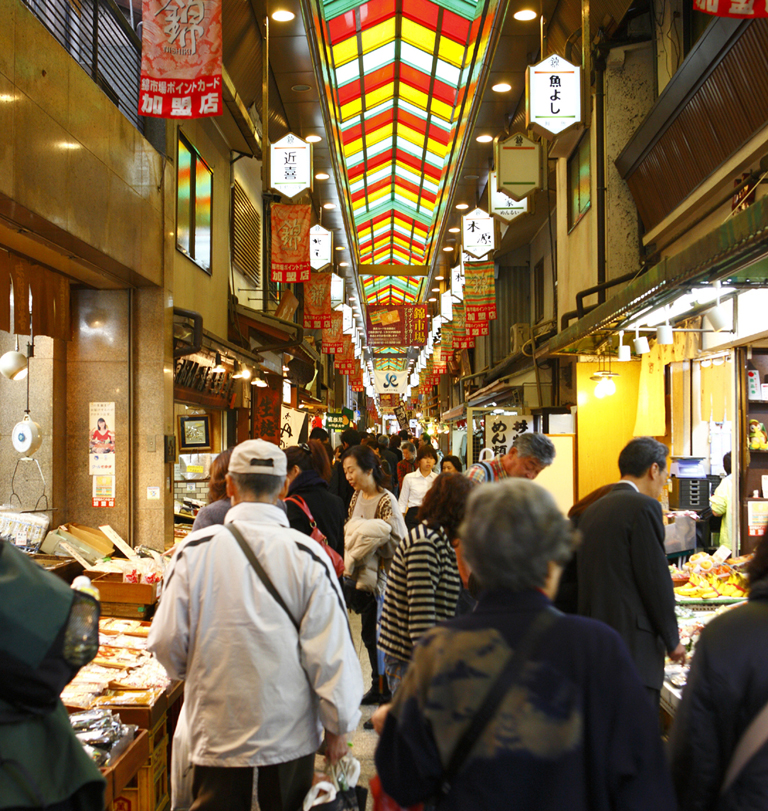
Introduction
I grew up in the downtown section of Tokyo, home to Edokko, the Edo peoplemy peoplea historic city subculture known for its good humor, easygoing cool, and soul. My family lived in a small house wedged beside the other modest houses in our working class neighborhood (houses so small you never have to shout, Edokko like to say). It wasnt a fancy area, but it was always full of life. Edokko are social people, and our lives revolved around family, friendsand great food and drink.
Every morning my mother headed to local markets to spend what she could to buy the freshest vegetables, fish, shellfish, pork, chicken, and meat. When my father returned from his job or a gig (he was also a musician), wed bring out our gorgeous tablewareour most prized possessionand pack our little dining room with family, my fathers bandmates, and a neighbor or two to share delicious, leisurely meals. Especially hot pot meals.
Hot pots became popular in Tokyo some four centuries ago, back when it was the newly minted capital of Japan, a city then called Edo. These cozy hot pot dishes were a fundamental food in my home, the beloved cooking of my childhood: tuna belly, when my mom could find it at the market; hearty yellowtail and daikon on frigid winter days; delicate pork shabu-shabu all year round; economical hand-pulled noodles at least once a month; and expensive sukiyaki (beef was pricey) every once in a while, to celebrate a special day.
I started cooking when I was sixteen and moved to America twenty-five years ago. Today Im a professional chef running an acclaimed restaurant in New York City. But when I take off my chefs coat and cook dinner in my family kitchen, hot pots are the dishes I always come back to. Nothing beats these humble, heartwarming meals I share with my wife and kids. Its real food that grounds me, real food that never lets me forget my roots.
Tadashi
An invitation to Sunday dinner at my friend, sensei, and coauthor Tadashis house inspired this book. My wife and I gathered around the dining table with Tadashi, his wife, and his two daughters and their sock monkeys. Platters brimmed with shrimp, glossy sea scallops, littleneck clams, and sliced red snapper waiting to be cooked. Neat mounds of napa cabbage, earthy mushrooms, green onions, bright carrots, and gleaming blocks of tofu beckoned on more trays. In the center of the table sat a portable burner, its flames warming a large clay pot bubbling with a caramel-colored broth. A heavenly soy sauce aroma filled the room.
OK, everybody, Tadashi announced. Lets. Do. Hot pot!
Hot pots are the quintessential Japanese comfort food, easy one-pot meals of wholesome ingredients poached in a mouthwatering broth. They can be cooked all at once or experienced as a fun feast, like that night at Tadashis, where each of us leisurely simmered the foods ourselves. Either way, theyre a communal dish to savor with family and friends.
I first tasted hot pots in Japan, where Ive been traveling for the past decade, writing about food, and studying how to cook it. I fell in love with these down-home dishes. Wherever I went, an invitation to share this cooking was a hand in welcomebreaking bread, Japanese-style. Watching his American-born daughters, fifth and sixth graders, eagerly plucking tasty vegetables and seafood from the hot pot, and just as eagerly sharing laughs at the table, Tadashi and I thought, why dont we all eat this way?



